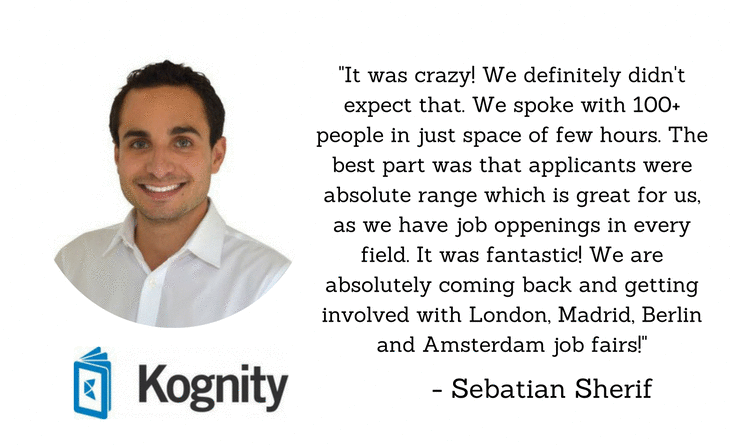
https://twitter.com/number1annajo
via Entrepreneur
Most new entrepreneurs are eager to expand as quickly as possible. They see growth as the fuel necessary to succeed and to achieve growth, you need to invest in more resources and a further reach. However, if you aren’t careful, expanding too quickly can work against you. So how can you scale up your hiring efforts without running into long-term problems that could threaten your business?
The Problems With Hiring Too Quickly
Let’s start by looking at the main problems with hiring too quickly and hiring too many people:
- Expenses. Employees are one of the largest expenses a new business will face, and if you aren’t careful, their costs can quickly overwhelm the business. If you’re suddenly tripling your staff, with little groundwork or revenue to support that increase, your business might not be in a position to survive long-term.
- Poor fits. Opening the doors to new people and filling roles as quickly as possible can be problematic for your organization. In a rush to fill seats, you may lower your hiring standards, ultimately ending up with candidates who don’t quite fit — either because they don’t have the requisite training and experience or because they don’t align with your culture.
- Culture retention. Speaking of culture, establishing bigger teams and/or teams in new locations can dilute your culture if you aren’t careful. Right now, you have a core, central team that embodies your values and can self-sustain your vision for the business. But bringing on too many people or bringing them on too quickly can cause that culture to fade away.

Strategies to Scale Hiring Efficiently
Fortunately, there are several strategies you can use to hire more efficiently, easing the burden on your finances while simultaneously granting you access to candidates who will serve a better fit.
- Inventory your needs. First, make sure you take the time to truly analyze and inventory your needs. You want your business to expand, but how quickly do you really need to expand, and how many employees do you really need to accomplish this? For example, you might have a vision for a future with 10 locations and a team of 15 employees per location, but could you accomplish the same results, or nearly the same results, with just eight locations? Or with 12 employees per location? What would those extra two locations or three employees per location be doing? The more exacting you are, the more unnecessary expenses you’ll be able to trim away before you even spend them.
- Focus on one segment at a time. Next, try to focus only on one segment at a time. If you’re opening multiple new locations, try to focus on hiring for one before you move to another. Start from the top and work your way down; if you have more skilled, more experienced and better-fitting leaders in place, they’ll be able to make new hires on your own. You’ll be able to trust their judgment as they expand their own teams. You also won’t get overwhelmed with hiring decisions, meaning you’ll likely make fewer compromises long-term.
- Expand who you’re willing to hire. Expanding the people you’re willing to consider for hire can be beneficial as well. A broader potential talent pool means you’ll have access to people from more backgrounds, with more diverse experiences, and possibly, lower costs as well. For example, you may want to get a U.S. visa or visa waiver to bring on someone from another country. You may also decide to go fully remote so you can hire people around the country (or even around the world).
- Supplement full-time hires with part-time hires and contractors. Full-time hires can be a major drain on your budget. They’re advantageous for long-term situations, due to their continuity and dependability, but if you’re still growing, you may need to trade those advantages for lower costs and more flexibility. If that’s the case, you’ll want to mix in a number of part-time hires an independent contractor hires with your full-time hires. Thanks to the gig economy, there should be no shortage of candidates.
- Take your time with onboarding and training. You can make sure your hires end up as a better culture fit by spending more time on onboarding and training. Invest in each new candidate, and provide them with all the training, education and resources they need to be successful. It’s a fantastic move for workforce sustainability.
Related: Hiring Your First Employee With these strategies, you should be able to steadily expand your business, bringing on plenty of new people without putting too much of a strain on your budget, diluting your culture or settling for poor fits. Take your time, set your goals in advance, and you’ll be much more satisfied with the final results.

Techmeetups.com is a Global Tech Community existing 9 years, with 22 interconnected communities, 75 organized job fairs, 1100+ hiring companies and 65,000+ startups, students and graduates, professionals, coders, salespeople, financiers, marketers & developers across the world.






